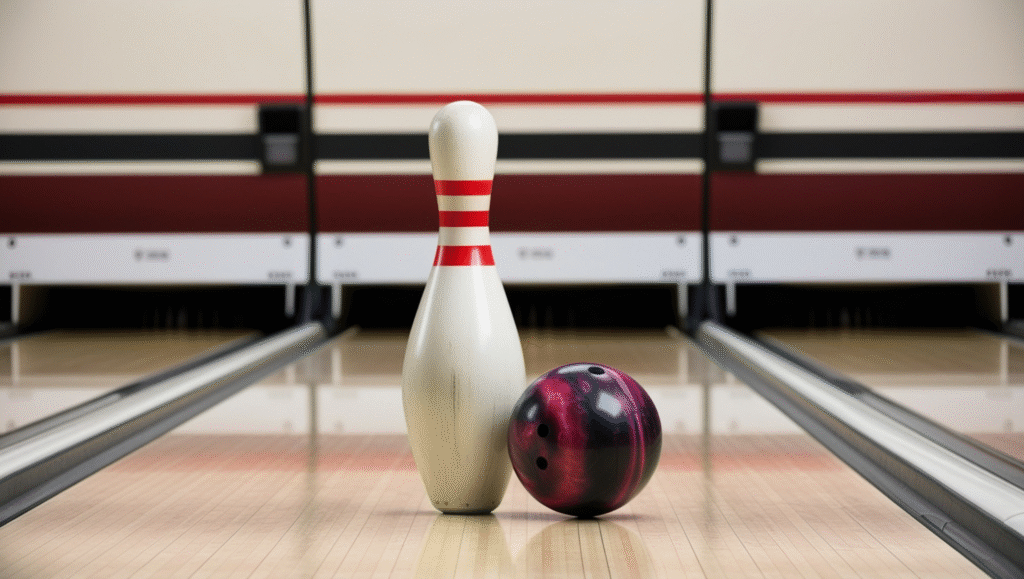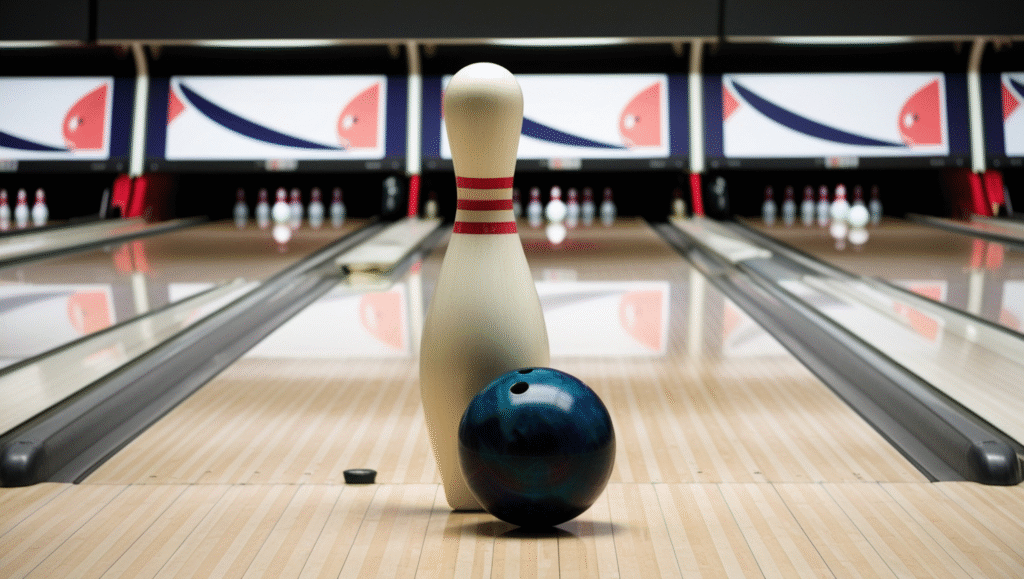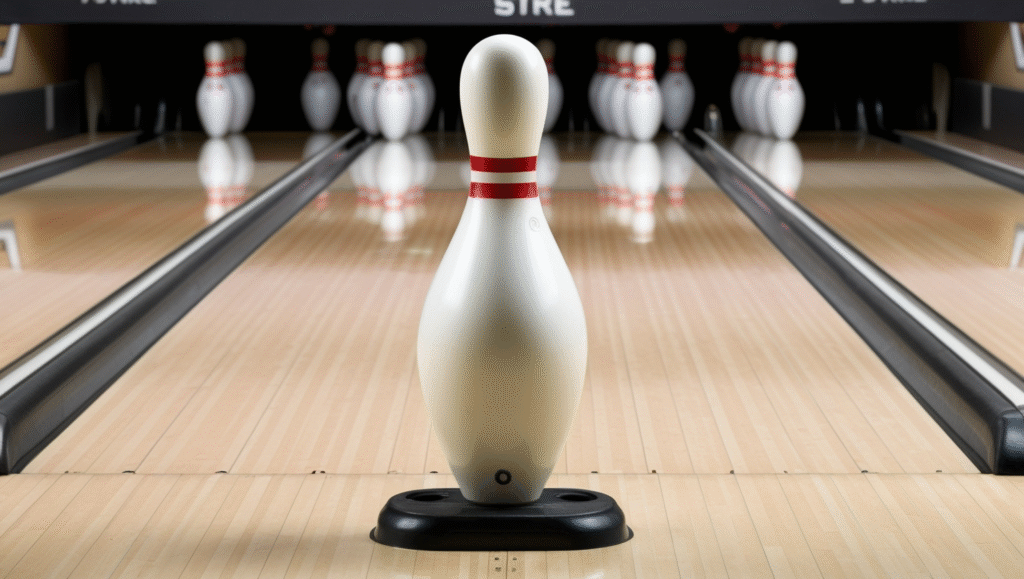What Is a Bowling Pin?
A bowling pin is a tall, white object with red stripes that stands at the end of a bowling alley. You try to knock it down with a bowling ball. Made of hardwood, the bowling pin sits on a spot called the pin deck. When you knock all the pins down with one roll, it’s a strike. Two rolls make a spare. Bowling pins make the game exciting because they’re the target everyone aims for. They’re simple but super important for this classic sport.
The Story Behind the Bowling Pin
Bowling pins have been around for a long time. People started bowling hundreds of years ago, using stones or wood as pins. However, the bowling pin we know today began in the 1800s. Back then, rules were messy, so in 1905, the American Bowling Congress made official sizes and shapes. They picked hardwood because it’s strong. Now, every bowling alley uses the same type of bowling pin. It keeps the game fair and fun. So, next time you bowl, remember the history behind those pins!
How Workers Make Bowling Pins
Creating a bowling pin takes careful steps. First, workers choose hardwood, often maple, because it’s tough. Then, they cut the wood into the right shape. After that, they sand it smooth so it looks nice. Next, they paint it white and add red stripes on the neck. Finally, they cover it with plastic to protect it from the bowling ball. This plastic also helps the pin slide when hit. Every bowling pin follows strict rules to be perfect for the game. It’s incredible how much work goes into this equipment!
The Look of a Bowling Pin
A bowling pin has a special design. It’s about 15 inches tall and weighs around 3 pounds 6 ounces to 3 pounds 10 ounces. The bottom is wide, but it gets narrow at the top. This shape keeps it steady on the lane yet easy to knock down. The red stripes aren’t just pretty—they help you aim. Every bowling pin looks the same, so the game stays fair. When you see those white pins with red stripes, you know you’re ready for some tenpin fun!

Setting Up Bowling Pins
Bowling pins stand in a triangle at the end of the lane. There are ten pins in total, placed in four rows. The first row has one pin, the second has two, the third has three, and the fourth has four. This setup is called tenpin. Your job is to knock them all down. A strike happens with one roll, while a spare takes two. The way the pins line up makes the game tricky but exciting. Each bowling alley sets them up the same way for a classic challenge.
The Pin Deck and Bowling Lane
The pin deck is where bowling pins stand. It’s at the end of the bowling lane, made of hardwood to take the ball’s hit. The lane stretches 60 feet from the start to the pins. When you roll the bowling ball, it slides down the lane to the pin deck. The smooth wood allows it to move quickly. Every bowling alley maintains this setup in the same way. So, whether you’re at home or far away, the lane and pin deck feel familiar. It’s all about making the game fun!
Resetting Pins After a Turn
After you bowl, the pins need to go back up. Long ago, people called pinsetters placed each bowling pin by hand. Now, machines do it fast. These machines lift pins that didn’t fall, clear the knocked-down ones, and set all ten back in place. It happens in seconds, so you don’t have to wait long. The machine ensures that every bowling pin is positioned perfectly for the next roll. It’s cool how technology helps keep the game moving. Next time you bowl, watch the machine work its magic!
Why the Bowling Pin Matters in the Game
The pin is the star of bowling. You aim to knock down as many pins as you can. Knock all ten down with one roll, and it’s a strike. Use two rolls, and it’s a spare. The game depends on hitting these targets just right. Sometimes, pins fall in odd ways, making it hard to get them all. That’s what makes bowling a fun sport. Every roll tests your skill with the bowling pin. It’s simple but keeps players coming back for more!
Scoring with Strikes and Spares
Scoring in bowling is easy to learn. A strike means you knock down all ten pins with one ball. You get ten points plus extra from your next two rolls. A spare means you clear the pins in two tries, earning ten points plus your next roll’s score. If some pins stay up, you count those you hit. The pin decides your points. So, every roll counts in this game. Practice aiming, and you’ll see your score climb higher!
The Shape That Changes Everything
The bowling pin’s shape is a big deal. Its wide bottom keeps it standing, but the narrow top lets it tip when hit. This mix makes the game fair and fun. If the pin were too heavy, it’d be tough to knock down. Too light, and it’d be too easy. The regulation shape and weight keep it just right. Every pin follows this rule, so players face the same challenge. That’s why the design is so clever for this sport!
What Bowling Pins Are Made Of
Most pins come from hardwood, like maple. This wood is strong enough to handle the bowling ball’s force. Some pins get a plastic coat to last longer. The plastic also helps them slide when they fall, reducing damage. Years ago, pins were made from other materials, but hardwood ultimately prevailed. Now, every bowling pin in a bowling alley uses this material. It meets competition rules and keeps the game going strong. Hardwood makes the pins tough and ready for action!

Keeping Bowling Pins in Good Shape
These pins take a beating and don’t last forever. After playing many games, they develop dents or cracks. When a bowling pin breaks, it’s time for a new one. Bowling alleys check pins often to keep them working well. A damaged pin can mess up the game, so they swap it out. Most places replace pins every few years. Keeps the sport fair and safe. Next time you’re at the alley, think about how they care for this equipment!
Cool Facts About Bowling Pins
These pins have fun secrets! In some places, people use smaller pins called Skittles for different games. Also, the red stripes on a bowling pin help you aim, not just look nice. Long ago, workers set pins by hand, but now machines perform this task. Another fact: a perfect strike knocks all pins down in one go! These tidbits make the bowling pin special. When you bowl, you’re part of a cool tradition that’s been around forever!
Bowling Pins in Movies and TV
The bowling pin pops up outside the alley, too! You’ve probably seen it in cartoons, where characters knock pins down in silly ways. Video games use them, and some diners even decorate with them. The white pin with red stripes is famous. Its easy-to-spot look makes it a sign of fun. So, when you watch TV or play a game, keep an eye out. This pin shows up more than you might think—it’s a classic everywhere!

Picking the Best Bowling Pin
Want this pin for home? Choose one that fits regulation rules if you’re serious. These are 15 inches tall and made of hardwood. You can buy them at sports stores or online. For kids, lighter pins work better—they’re easier to knock down. Make sure the bowling pin is strong and well-made. Whether for practice or play, the correct pin makes the game fun. Check reviews to find a good one, and you’ll be ready to roll!
Bowling Pins in Big Competitions
In big bowling contests, the bowling pins have to be perfect. The United States Bowling Congress checks every pin’s size, weight, and shape. It keeps the game fair for all players. A pin that’s off can ruin a competition, so they use only certified ones. Bowling alleys follow these rules for tournaments. The bowling pin might seem small, but it’s a massive part of the sport. When pros bowl, they trust the pins to play right!
Why Kids Enjoy Bowling Pins
Kids love bowling pins because they’re simple. The goal is clear: knock them down with a ball. When pins fall, it’s a big cheer moment! Many alleys have kid-friendly games with smaller pins and light balls. It makes it easy for them to join in. The white pins with red stripes also grab their attention. For young bowlers, the bowling pins means fun with friends or family. It’s a target that makes every trip to the alley a blast!
Wrapping It Up
The bowling pin is the heart of bowling. Its design, history, and role in the game make it a special entity. Whether you’re chasing a strike or just playing for laughs, it’s always there as your target. This classic piece of equipment brings people together for fun. So, grab a bowling ball and visit your local bowling alley. See the pins up close and try your best shot! You might discover a new hobby—or even get a perfect score. Roll on and enjoy the game!
References:
- United States Bowling Congress. (2025). Rules and Equipment Standards.
- National Bowling Museum. (2025). The Evolution of Pins.
- Professional Bowlers Association. (2025). Pin Specifications.
- World Bowling Association. (2025). History of Tenpin Bowling.
